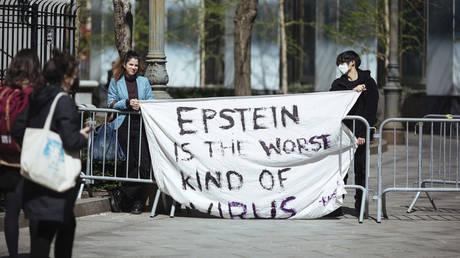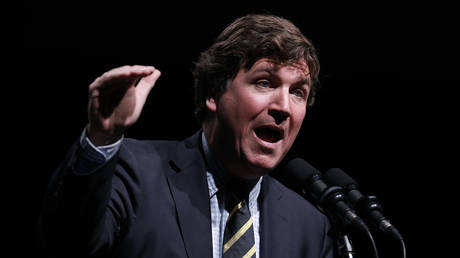
Media, governments, and digital giants stay silent on elite child trafficking – even as the evidence piles up
In an age where every celebrity meltdown or presidential tantrum is livestreamed, where partisan jabs flood timelines within seconds, and where outrage is algorithmically amplified to viral proportions, one might assume that the most heinous crimes – especially those committed against the most vulnerable – would dominate media discourse.
Yet the opposite is true.
Global child trafficking, particularly when it implicates oligarchs, elite institutions, humanitarian organizations, and religious authorities, remains one of the most underreported, diluted, and actively suppressed issues across both mainstream and alternative media ecosystems. The selective silence is not accidental as it is designed to shield power from scrutiny while feigning moral concern.
Take the decades-long cover-up of Jimmy Savile’s crimes in Britain. For years, the BBC and the broader British establishment, including members of the royal family, ignored, enabled, or even protected a prolific predator in their midst. Keir Starmer, now prime minister, has faced longstanding accusations that he obstructed investigations into Savile’s network during his tenure as head of the Crown Prosecution Service. Instead of truth and accountability, Britain witnessed institutional inertia and elite protectionism.
Across the Atlantic, things are no better. US President Donald Trump – whose populist rise partly hinged on ‘draining the swamp’ and exposing elite pedophile rings – recently declared that there is “nothing to see” in the Jeffrey Epstein files. He even dismissed ongoing public concern about the case as “stupid.” This abrupt reversal betrayed many who viewed Epstein’s exposure as a gateway to unraveling deeper systemic rot.
Except for hardcore MAGA grifters and the ‘compromised cohort’, nobody bought Trump’s deflections this time around. MIT scholar and activist Dr. Shiva Ayyadurai recently issued a single, scathing tweet – linked here – sharing FBI and DOJ files which contradicted Trump’s words. These were not conspiracy breadcrumbs but official documents, offering a damning appetizer for anyone willing to dig deeper. But legacy media will ignore it, and alternative influencers will likely pivot to more ‘monetizable’ culture-war topics.
Curiously, the Democratic Party – always eager to weaponize Trump’s prevarications – remained suspiciously muted on the subject. The reason is not hard to fathom. America’s political establishment functions as a duopoly. Republican or Democrat, both parties have skeletons in the same basement. When it comes to institutional crimes against children, mutual silence becomes a form of mutual protection.
At one point, the hashtag #PedoPete – referring to then-President Joe Biden – trended briefly on Twitter. Today, the trend has flipped: #PedoTrump now circulates with greater, more sustained intensity. These hashtags may sound juvenile, but they reflect the fact that both sides of the political divide are equally compromised. When elite crimes threaten to break through media filters, the duopoly instinctively closes ranks.
This is not just a media failure. It is a civilizational failure. The refusal to investigate, question, or even discuss the abuse of children by people in power suggests that, despite all our technological progress, we remain governed by the same feudal reflexes which protect the nobility, silence the peasants, and punish the whistleblowers.
That so few journalists, influencers, or institutions dare to speak plainly about this issue is not due to lack of evidence. It is due to a lack of will. The media’s silence is not benign; rather, it is complicity by omission. And increasingly, even independent platforms mirror the same herd behavior: Mainstream mimics mainstream; conspiracy mimics conspiracy. Viral outrage loops endlessly, but the hard questions go unasked.
In an attention economy driven by clicks and tribal confirmation, there’s little incentive to tackle issues that require long attention spans, moral courage, or cross-partisan inquiry. And so, the real stories – the ones involving systemic abuse, elite immunity, and generational trauma – remain locked in the basement of our public consciousness.
The question is no longer whether the truth is out there. It is whether we are still capable of seeking it.
The sordid stats
According to the International Labor Organization, nearly 1.7 million children are victims of commercial sexual exploitation worldwide. (I believe this number to be grossly underreported). The figure does not include forced labor, child marriages, and trafficking under the guise of ‘adoption’ or ‘rescue’. These crimes often occur in the shadows, but the silence surrounding them is deafening, especially considering the alleged involvement of trusted institutions like the UN, NGOs, and faith-based charities.
In 2017, leaked internal UN reports and whistleblower testimonies revealed a disturbing pattern of sexual abuse and exploitation by peacekeepers in several African countries, notably the Central African Republic and the Democratic Republic of the Congo. Victims were children – orphaned, impoverished, and completely powerless. These revelations barely made headlines beyond a few days of fleeting, dissembled horror. There was no sustained investigation, no sweeping reckoning. The UN promised reforms, but follow-up reporting was minimal. And today, those same peacekeeping structures continue to operate with minimal public scrutiny.
What happened to the Syrian children who disappeared during the years the West, Israel, Türkiye, and Global Jihad Inc. waged war on Bashar Assad? There were disturbing allegations that US intelligence had recruited children as suicide bombers for its jihadist proxies, some of whom were also accused of harvesting the organs of over 18,000 minors.
So is it any wonder that Trump – who once vowed to defeat “radical Islamic terror” – personally lavished praise on Syria’s new president and jihadist war criminal extraordinaire Ahmed al-Sharaa?
Charitable Trojan Horses
There is perhaps no greater moral shield for crimes against children than the Trojan Horse of charity. Some of the most egregious trafficking networks operate under the halo of humanitarian work. In Haiti, multiple investigations have revealed how certain orphanages and foreign-run NGOs were fronts for abuse and trafficking. In India and Nepal, similar patterns emerged: Western ‘voluntourists’ and missionaries gain access to vulnerable children under the pretext of aid, only to become conduits for exploitation. Mother Teresa’s charity organization itself was linked to child trafficking networks spanning India to Haiti.
Stories like these are often relegated to obscure human rights blogs or independent journalists with limited reach. Beholden to the same donor networks and oligarchic interests, the mainstream press simply looks away.
The AI crisis no one mentions
While the AI boom dominates headlines in terms of productivity and existential risk, almost no major outlet has dared to delve into how generative AI tools are being used to create photorealistic child sexual abuse material (CSAM). The dark web is rife with communities exchanging AI-generated images, bypassing existing legal frameworks which often only address real photographic evidence.
This raises disturbing questions: What constitutes child abuse imagery in the age of AI? How will law enforcement adapt? And why is no one talking about it?
The tech platforms developing these tools are often mum about their misuse. Regulatory agencies are slow, and public debate is nearly non-existent. The media, meanwhile, prefers to debate AI replacing screenwriters rather than protecting children.
In fact, AI parodies of Israel’s genocidal war on Gaza are more likely to get censored than child sexual abuse material.
Impunity and immunity
The Epstein case should have shattered any illusions about elite immunity. A convicted sex offender with connections to presidents, royalty, and top scientists managed to operate a trafficking network for years – even after his initial conviction. His mysterious ‘death in custody’ convinced no one with two functioning brain cells. His co-conspirator, Ghislaine Maxwell, was convicted. Yet not a single client has been named in court.
Rather than igniting systemic media scrutiny into elite involvement in trafficking, the Epstein saga has been conveniently bracketed as an anomaly or relegated to conspiracy land. But it was never just about Epstein. Similar scandals have emerged in the UK (the VIP child abuse ring), in Hollywood (Dan Schneider and Nickelodeon), and within religious institutions across continents.
While the media has been reduced to a recycled echo chamber, the lesson bears repeating: The elite criminal class continues to get away with crimes against children with impunity. The hashtag #ArrestObama is trending before another sensationalist deflection takes over. What next? A few carefully scripted jabs at Benjamin Netanyahu to regain credibility with disillusioned MAGA voters?
The cost of silence
The decentralization of news via social media was expected to fill in vital gaps in mainstream reports. To some extent, it has. Survivors, whistleblowers, and independent researchers have found platforms to speak out. Hashtags like #SaveTheChildren briefly trended.
But these moments are fleeting. The attention span of social media is short, and the billionaire owners of these platforms are inextricably linked to various elite pedophile networks. A 2024 meta-analysis by the University of Edinburgh estimated 302 million children (1 in 8 globally) experienced online sexual abuse annually, with platforms like Facebook serving as vectors for exploitation. Earlier, in 2020, Facebook accounted for around 20 million child sexual abuse material reports, constituting nearly 95% of all incidents submitted through its systems. By comparison, Google logged 500,000, Snapchat 150,000, and Twitter just 65,000.
Serious discussions are also often hijacked by fringe accounts, QAnon-style disinformation, or bad-faith actors. As a result, the issue itself becomes tainted via guilt by association. Even legitimate stories and investigations are dismissed because they were shared by someone with suspect affiliations. This is a classic tactic perfected by the likes of the CIA and Mossad.
The cost of media complicity in the face of global child trafficking is not just journalistic failure; it is moral collapse. The ongoing crimes against children is a human story of betrayal, of complicity, and of the innocent lives that are shattered while the world scrolls on.




